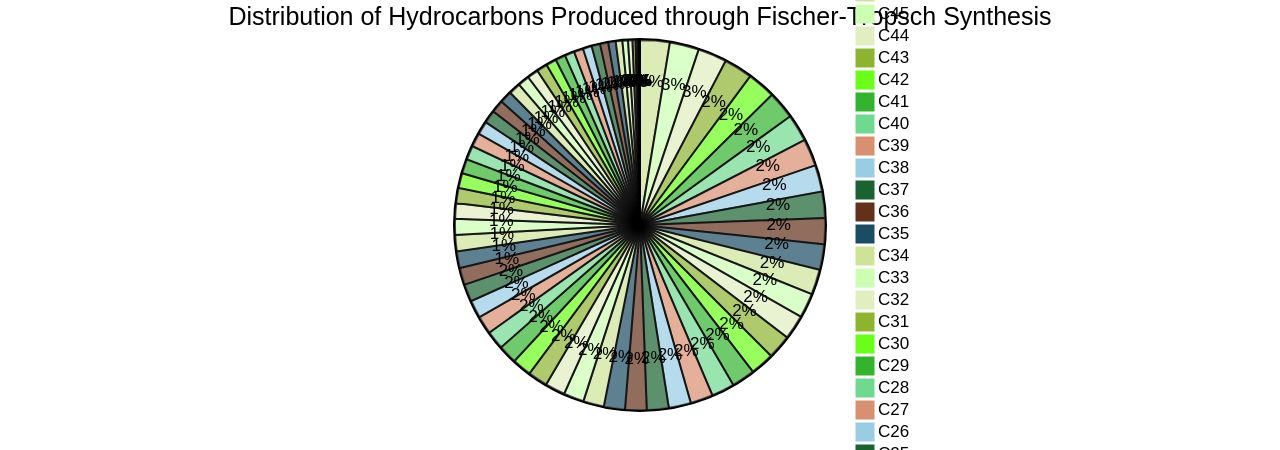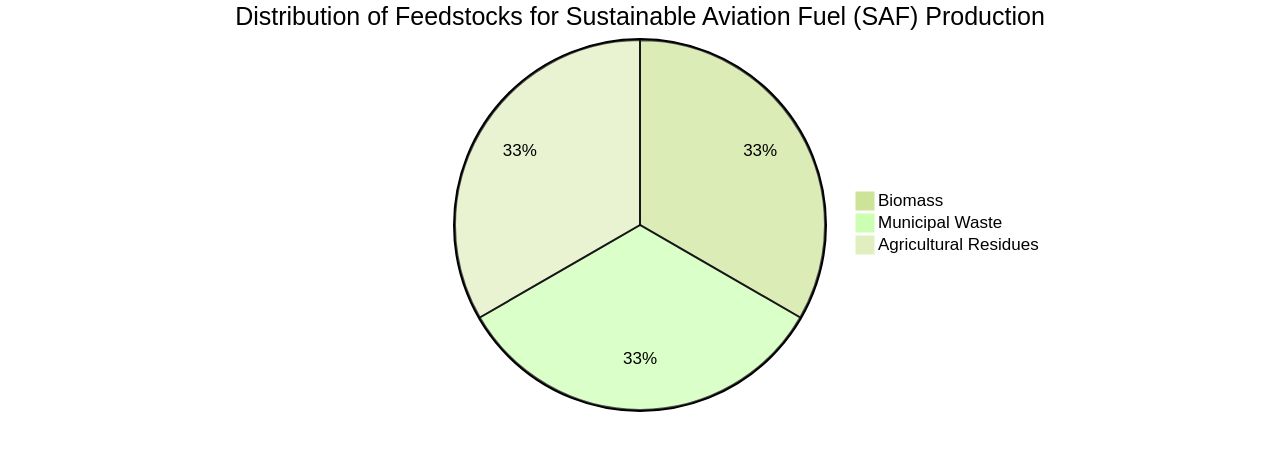Introduction
Fischer-Tropsch synthesis, a powerful process for generating hydrocarbons from carbon monoxide and hydrogen, has become a key player in the renewable fuels industry. With over 80% of global energy consumption being addressed by this method, it offers a viable alternative to traditional petroleum resources.
Recent developments in catalyst design and materials have further enhanced the efficiency and selectivity of the Fischer-Tropsch process. This article explores the history, applications, and advancements of Fischer-Tropsch synthesis, with a focus on its role in sustainable aviation fuel production. Join us as we delve into the technical insights and analysis of this sophisticated process.
Fischer-Tropsch Synthesis: History and Applications
Fischer-Tropsch synthesis, established in the 1920s by Franz Fischer and Hans Tropsch, is a potent tool for generating various hydrocarbons from carbon monoxide and hydrogen. This chemical process, which currently addresses over 80% of global energy consumption, presents a viable alternative to traditional petroleum resources. It empowers the production of fuels and chemicals from an array of sources, including biomass and natural gas.
The versatility of the Fischer-Tropsch process is its strength, enabling the production of a broad spectrum of hydrocarbons (C 1 -C 70+ ). Recent developments have uncovered unexpected oscillatory behavior in the intricate catalytic conversion process, potentially enhancing catalytic performance and paving the way for more targeted catalyst design. Innovative materials such as tungsten trioxide (WO3 catalyst) are emerging, boasting near-perfect selectivity under visible light and thus increasing efficiency and minimizing undesirable byproducts.
These developments signify a substantial stride towards eco-friendly production methods, highlighting the evolving sophistication of Fischer-Tropsch synthesis in the renewable fuels industry. Technologies like flexiforming offered by Unifuel.tech bring a new level of control to operators in their decarbonization journey. This technology, applicable in dormant hydrotreaters or reformers, curtails both capital expenditure and carbon intensity.
Operators can provide information about their feeds, target products, and existing facilities for Unifuel. Tech to identify the most suitable flexiforming application. Unifuel.tech, part of Universal Fuel Technologies, commits to responding to inquiries within 24 hours, underscoring its dedication to customer service.

Fischer-Tropsch Synthesis Process
The Fischer-Tropsch synthesis, a cornerstone in the energy sector, is a three-tiered process that transforms various feedstocks into a wide array of hydrocarbons. It commences with the preparation of synthesis gas, where feedstocks such as natural gas or biomass are converted into carbon monoxide and hydrogen. The subsequent stage involves catalytic conversion, where the synthesis gas reacts over a catalyst, leading to a variety of hydrocarbon products.
The final stage, product separation, ensures the extraction of the desired hydrocarbon products from by-products and impurities. Given that over 80% of energy consumption is powered by rapidly diminishing crude oil, the Fischer-Tropsch synthesis is critically important. Its significance is amplified by the aviation industry's contribution to 2-3% of global CO2 emissions and the industry's objective of reaching net-zero carbon emissions by 2050.
Thus, this process becomes a key player in the production of sustainable aviation fuel (SAF), a potential solution for decarbonizing aviation. Nevertheless, the technology surrounding SAF is still in its infancy and encounters challenges in large-scale production. For instance, synthetic fuels must hold between 8-25% aromatics to meet the global Jet A fuel specification, while at present, only a maximum of 50% SAF can be mixed with traditional jet fuel.
However, the future of Fischer-Tropsch synthesis in SAF production remains promising, supported by ongoing research and planned SAF outputs. In light of these challenges, companies like Unifuel.tech offer innovative solutions. They have developed Flexiforming, a technology that allows operators to select their decarbonization speed.
It can be implemented in an idle hydrotreater or reformer, which significantly reduces both capital expenditure and carbon intensity. Unifuel.tech responds to inquiries within 24 hours and requests information about feeds, target products, and existing facilities to identify the optimal application for Flexiforming. This approach demonstrates how technology advancements can potentially overcome some of the challenges faced in the production of SAF using the Fischer-Tropsch synthesis.

Role of Fischer-Tropsch Synthesis in Sustainable Aviation Fuel Production
Fischer-Tropsch synthesis is crucial in crafting Sustainable Aviation Fuel (SAF), offering an eco-friendly alternative to traditional jet fuel, significantly diminishing aviation's carbon emissions. This process metamorphoses carbon monoxide and hydrogen, derived from renewable resources, into long-chain hydrocarbons that adhere to stringent aviation fuel requisites.
A notable endeavor in this domain is the collaboration between ORLEN and Yokogawa, aiming to establish an integrative solution for synthetic fuel production. The joint venture utilizes a 'digital twin' of a production facility to fine-tune processes and choose the most sustainable synthesis method.
It amalgamates hydrogen, generated through renewable-energy-driven electrolysis, and carbon dioxide from various industrial procedures to create synthetic fuels. These fuels mirror conventional petroleum derivatives, leading to a significant cutback in greenhouse gas emissions.
Moreover, a unique approach to synthetic SAF production is under research at Uppsala University, using genetically modified cyanobacteria. These organisms harbor a unique enzyme from the Eucalyptus tree, facilitating the production of the hydrocarbon isoprene using solar energy and carbon dioxide.
This method could potentially produce larger hydrocarbons akin to current aviation fuels, with sunlight driving both processes. Besides, the BioForming process played a key role in Virgin Atlantic's trans-Atlantic flight powered by 100% SAF, demonstrating compliance with ASTM international jet fuel standards without resorting to conventional jet fuel.
This process transmutes a variety of plant sugars and other soluble carbohydrates into synthetic aromatics, showing adaptability to resources available in diverse regions. Innovative solutions like Unifuel.tech's Flexiforming further propel SAF production. Flexiforming allows operators to determine their decarbonization pace and can be implemented in an idle hydrotreater or reformer, lowering capital expenditure and carbon intensity. The application of Flexiforming is tailored based on the user's feeds, target products, and existing facilities. Universal Fuel Technologies, the parent company of Unifuel.tech, provides further details on their website. These innovations, in conjunction with the Fischer-Tropsch synthesis and other methods, are significantly pushing SAF production towards a greener aviation industry.
Advantages of Fischer-Tropsch Synthesis in SAF Production
The Fischer-Tropsch (FT) synthesis, a catalyst-driven conversion process, serves as an essential gateway to Sustainable Aviation Fuel (SAF) production. This method's flexibility enables the utilization of diverse feedstocks, including biomass, municipal waste, and agricultural residues, thereby expanding the potential for SAF production.
The FT synthesis produces a wide spectrum of hydrocarbons, primarily n-alkanes and linear olefins, which also include iso-alkanes and cyclic hydrocarbons. These are transformed into high-quality hydrocarbons with low sulfur and aromatic content, resulting in cleaner and more eco-friendly aviation fuel.
The adaptability of FT synthesis allows SAF to be easily integrated into existing refinery infrastructures, promoting scalable production. For instance, Sweden's projected annual SAF production of 80,000 tons is anticipated to cater to 20% of the country's SAF demand by 2030.
However, the full potential of SAF can only be leveraged if it's blended at a maximum of 50% with conventional jet fuel, due to the absence of aromatics in SAF. Overcoming this limitation, a new process has emerged, enabling the production of bio-based aromatics, which could potentially facilitate the use of 100% SAF in aircraft. Despite these challenges, Saf's lifecycle greenhouse gas (GHG) emissions are notably lower than traditional jet fuel, positioning it as a crucial element in attaining the aviation industry's 2050 emission reduction targets. Furthermore, partnerships like the one between ORLEN and Yokogawa aim to develop integrated management solutions for synthetic fuel production, marking significant strides towards a sustainable aviation future.

Conclusion
Fischer-Tropsch synthesis is a powerful process that addresses over 80% of global energy consumption, providing a viable alternative to traditional petroleum resources. Recent advancements in catalyst design and materials have enhanced the efficiency and selectivity of this process, making it a key player in sustainable aviation fuel (SAF) production.
The versatility of Fischer-Tropsch synthesis allows for the production of a wide range of hydrocarbons from carbon monoxide and hydrogen. This process has the potential to significantly reduce aviation's carbon emissions as the industry aims for net-zero by 2050.
Challenges in large-scale SAF production, such as blending limitations with conventional jet fuel, are being addressed through ongoing research and innovative technologies like Flexiforming. Collaborations between companies like ORLEN and Yokogawa are exploring integrative solutions using renewable energy-driven electrolysis and carbon dioxide capture to create synthetic fuels that mirror conventional petroleum derivatives.
Research on genetically modified cyanobacteria at Uppsala University shows promise in utilizing solar energy and carbon dioxide to produce larger hydrocarbons resembling current aviation fuels. The advantages of Fischer-Tropsch synthesis lie in its flexibility to utilize diverse feedstocks and its ability to produce high-quality hydrocarbons with low sulfur and aromatic content. Despite limitations on blending percentages, new processes are emerging to enable the production of bio-based aromatics, potentially facilitating the use of 100% SAF in aircraft. Overall, Fischer-Tropsch synthesis plays a crucial role in advancing sustainable aviation fuel production. With ongoing research, technological advancements, and partnerships focused on synthetic fuel production management, the potential for achieving emission reduction targets by 2050 becomes more attainable.




